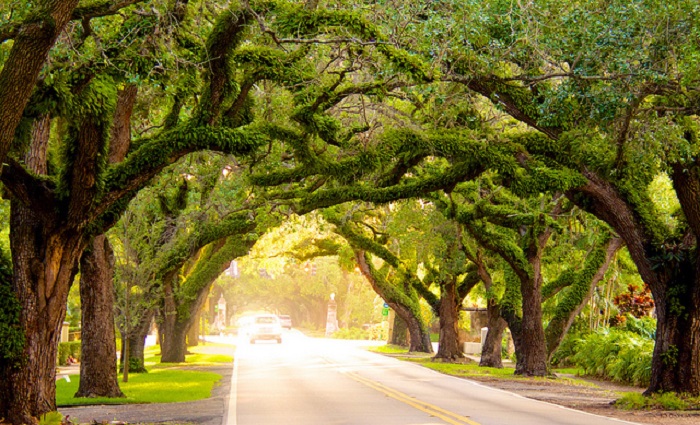An opportunistic human pathogen makes itself at home on old oaks.
At one point or another, most people have played host to the common yeast Candida albicans. Around 40-60% of healthy adults carry around it in their mouth or guts; in immunocompromised people, however, this normally harmless cohabitant becomes a deadly pathogen. Generally thought to only grow in warm-blooded animals, C. albicans has occasionally been isolated from plants—from blades of grass in a New Zealand pasture to gorse and myrtle plants on a sheep-grazed hill in Portugal to an African tulip tree in the Cook Islands. Are these just cases of misplaced yeast, or can C. albicans really thrive outside a warm body? In a report in GENETICS, Bensasson et al. describe the genomes of three C. albicans strains isolated from the barks of oak trees in an ancient wood pasture, providing genetic evidence that this yeast can live on plants for extended periods of time.
A survey of budding yeast on oaks in Europe turned up three new strains of C. albicans; they were found only on some of the oldest trees. After ensuring that the new strains were indeed new tree-based isolates (and not merely laboratory contaminants), the authors conducted a phenotypic investigation. All three strains showed most of the standard traits of C. albicans, including the ability to grow at the elevated temperatures expected in a mammal; however, they were not identical. One of the strains was not as salt tolerant as the others, would not grow on soluble starch, and switched to a different growth form under particular nutritional conditions.
The authors next sequenced the genomes of the new strains; this was the first time C. albicans from a non-animal source have been sequenced. Genomic analysis showed that the three strains were relatively distantly diverged from each other, and the new sequences were compared with over 200 yeast sequences previously isolated from humans and other animals to create a phylogenetic tree. Interestingly, all three of the tree strains showed more similarity with clinical strains than with each other.
The authors also analyzed the levels of heterozygosity—a measure of genetic variation—within the tree strains and found that these strains are more heterozygous than typical clinically isolated strains, which suggests that life on trees subjects the yeast to different selection or mutation pressures than life in humans. Higher heterozygosity could be a result of yeast evolving in conditions where they have to reproduce asexually, which would make mutations more likely to accumulate, thus increasing allelic variation. This difference also supports the idea that these yeast grow in the wild, rather than being recent emigrants from a warm-blooded host.
These findings may have implications beyond the shady groves of the New Forest; understanding the wild life of C. albicans could shed light on the evolution and lifestyle of the yeast found in humans and help us better understand how virulent strains emerge and damage human health.
CITATION:
Diverse Lineages of Candida albicans Live on Old Oaks
Douda Bensasson, Jo Dicks, John M. Ludwig, Christopher J. Bond, Adam Elliston, Ian N. Roberts, Stephen A. James
Genetics January 2019 211: 277-288; https://doi.org/10.1534/genetics.118.301482
http://www.genetics.org/content/211/1/277













